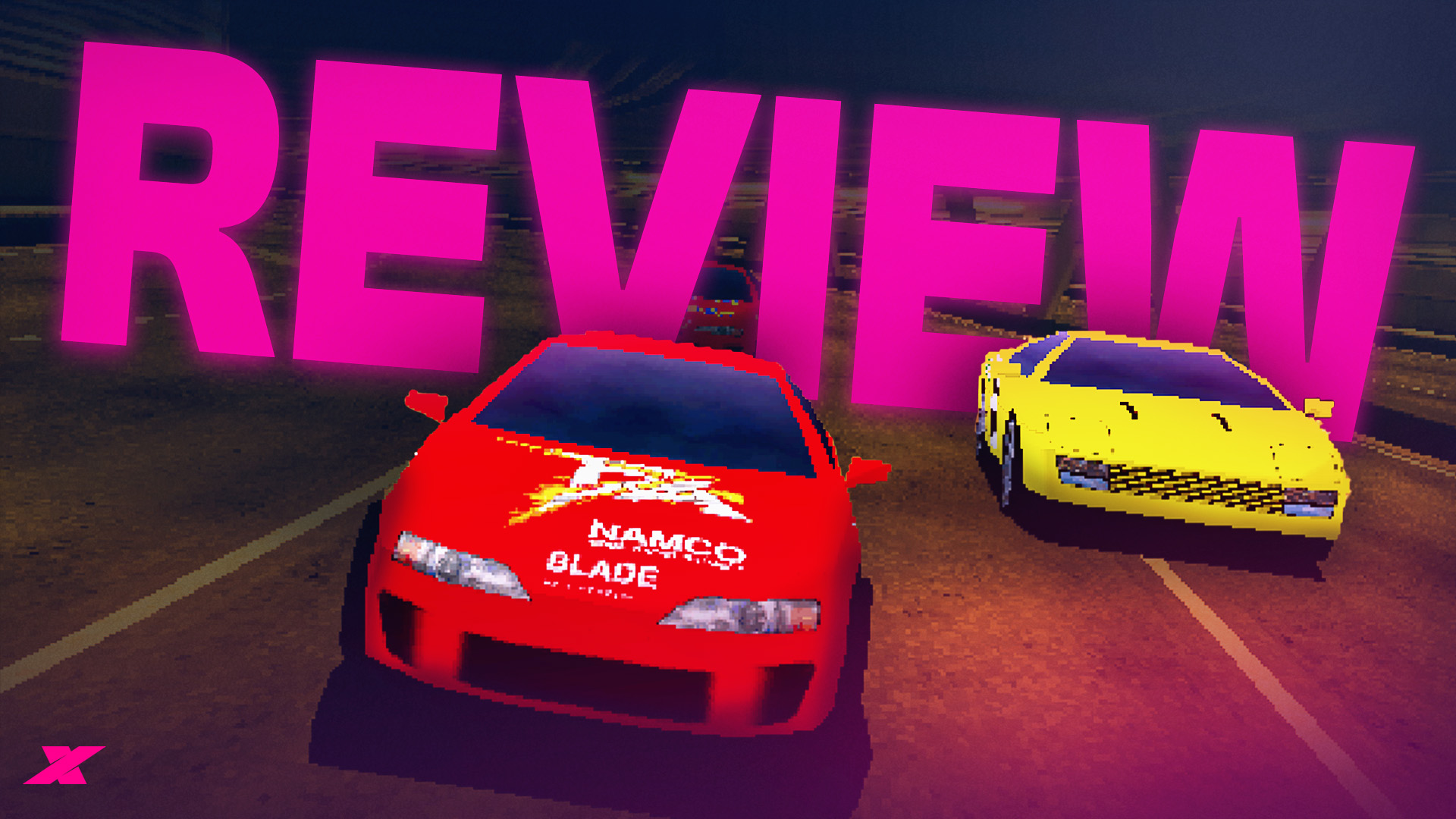It’s going to sound daft now, but Ridge Racer in 1993 was unnerving. I remember looking at the arcade version in a beachside arcade in genuine alarm, thinking it was eerily like real life going on inside the CRT screen.
Despite the home conversion of PlayStation the following year (which in hindsight, was pure witchcraft), we’ve never had the arcade original officially released for any home console until now.
But there’s no way 1993 me would believe I would one day be writing about that fact and then whipping out the exact same arcade version of Ridge Racer for a quick blast while sitting in a coffee shop. 1993 me would think I am unbelievably lucky. And you know what? He’d be right. This is awesome.

Arcade Ridge Racer is almost a perfect fit for Nintendo Switch 2, releasing on launch day besides the machine as well as other consoles the same week. ‘Almost’ because the controls are extremely twitchy when you first start racing.
If you adopt the method of holding the left stick forward on your shiny new JoyCon 2 and rotating it around for a more even turn, it is very controllable and incredibly precise, but still takes a lot of getting used to, as the slightest waggle will send you flying into the wall.
But soon you will grow accustomed to its very digital simulation of a road car, relearning how to power drift through the tighter corners, how to pass the CPU cars without losing loads of time through a collision, and watching as the game goes from day to night and back again as you race. Touching the side loses you loads of speed, and it feels much more grounded in reality than later games in the series.

The simple act of piloting this vehicle through 60fps polygonal 3D is still a joy. The ‘ridges’ of the title are still enjoyable to cruise over, the concrete city and beachside setting still feeling hot and breathless. And the handling of the vehicle, while primitive by today’s standards, still has plenty of scope for skillful play.
The game only has one circuit, albeit with an extended section on the harder difficulty level, yet somehow it still manages to feel fresh and engaging 22 years later. The car’s top speed varies with the difficulty level, so corners you can initially take flat out later require cunning use of the drift mechanism, which is more subtle and nuanced than that of Ridge Racer Type 4 through 7, and certainly moreso than the PSP games’ unrealistic handling.
It’s also pleasing to note the track itself has some cool features, like allowing you to ride the kerb as you exit the mountain heading down to the beach. The track design is great, at least on the main layout of the course, it’s just a pity there isn’t more of it.

It’s evident Namco expected players to have a go and then give up the seat for the next person, as the announcer does repeat himself very quickly. I don’t care somebody’s right on my tail, shut uuuuup! Still, even playing for a long session, the classic default music is still enjoyable and the game never feels stale.
The game is being emulated from four original arcade ROMs: the Japanese and English versions, each with a DX version that supports clutch control. Said clutch is a bit fiddly with a pad, especially when you have to use the right stick (which is circular) to directionally select which of the 6 gears you want. Not easy, but still pretty cool.
What with it all being emulated, there are save states available – even with a mappable controller button shortcut for quicksave and load, which is ace. It runs very smoothly, and has some superb screen filters to choose from. The most basic is scanlines of varying severity, but you can also choose to emulate the effect of not only a curved CRT screen (awesome) but also a failing CRT screen (amazing).

There are also online leaderboards for best times and high scores, though the latter is really just a case of going as far as you can within a set time limit, which is basically time attack anyway, just by a different name. There are no multiplayer options (which is actually authentic because link-up play was only introduced for the almost-identical Ridge Racer 2) and there aren’t even any camera views besides the bumper cam.
Overall, however, the OG Ridge Racer has stood the test of time incredibly well. This game is 32 years old and yet still feels like a worthwhile thing to play on new hardware in 2025. It isn’t as feature-rich nor as essential as M2’s Switch version of Virtua Racing, which remains the gold standard for arcade conversions, but it’s nonetheless a very classy and well-presented conversion.

The last thing, however, is really weird. The palpable hit of nostalgia. Keep in mind, I’ve played the series for hundreds and hundreds of hours and still load up the PS1 original for a blast every now and then. And yet, playing the genuine arcade Ridge Racer on Switch 2, I got a really strange feeling that it was actually 1993 again.
Not a pang of memory, but a real feeling I could stand up and walk outside I’d be there. Not a bad side effect, considering the state of the world at the moment. Being able to relive that wonder of properly playing this cutting-edge arcade game for the first time again – albeit 32 years later – is wonderful. I wonder what my mum’s cooked for dinner…






Chat with the Community
Sign Up To CommentIt's completely Free